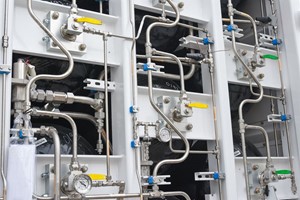News
Wärtsilä and U.S. partners succeed with world’s first-of-its-kind power plant fuel tests using blended H2
The testing of H2 blended fuel carried out by the technology group Wärtsilä in collaboration with WEC Energy Group, EPRI and Burns & McDonnell has been concluded. The tests were made at WEC Energy Group’s 55 MW A.J. Mihm power plant in Michigan, U.S. using an unmodified 18 MW Wärtsilä 50SG engine. The H2 and H2 blending skid was provided by Certarus. The tests were completed in October 2022.
Throughout the testing period, the Wärtsilä engine continued to supply power to the grid. This is the largest internal combustion engine ever to operate continuously on a H2 fuel blend, representing therefore a world-first achievement. The results were in line with all expectations. The full report with details will be published early in 2023.
“We’re very pleased to take a leading role exploring the potential of this technology as we focus on providing customers with affordable, reliable and clean energy,” said Gale Klappa, Executive Chairman, WEC Energy Group. “As we bring more renewable energy online, we must ensure that we can keep the lights on when the sun is not shining and the wind is not blowing. The results of this project are a strong indicator that these dispatchable units can run on very low- and no-carbon fuels.”
“While we continue to work on making pure hydrogen fuel a viable option, I believe that this testing project reinforces Wärtsilä’s leading position in the development of technology using sustainable fuels. The results have been outstanding, and no technical modifications whatsoever were needed to be made to the Wärtsilä 50SG engine. This once again provides concrete evidence of the fuel flexibility and versatility of Wärtsilä’s engine technology. Decarbonization is a central issue for today’s global energy sector, and these tests move us a little closer to reaching it,” said Kai Janhunen, Vice President, Engine Power Plants, Wärtsilä Energy.
Wärtsilä is actively carrying out the engine tests with 100 % H2 fuel at the company’s engine laboratory in Vaasa, Finland. Results thus far have been encouraging, and the company expects to have an engine and power plant concept for operating with pure H2 available by 2025.



